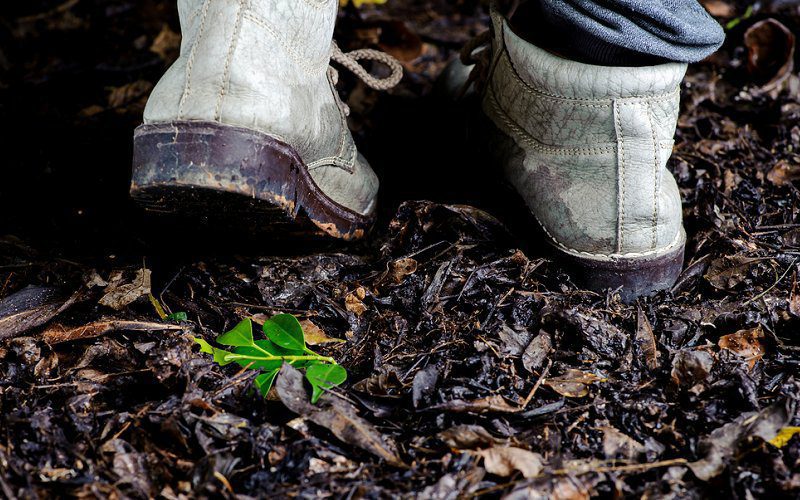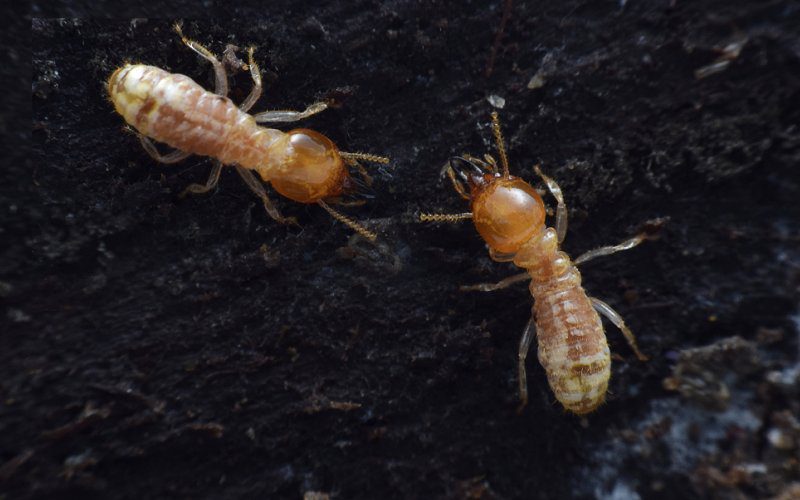
Australian operated

Australian operated
Free on-site visit & quote
Over 14,000+ homes protected
5/5 stars is most frequent rating

“I’m retired and enjoy spending my time out in the garden. Occasionally I might spot what appears to be white ants. Should I be concerned? What do you recommend?”
 Great question Glynis. We’re quite often called out to jobs by concerned home owners where live Termites have been found in the yard – often in garden beds and mulch. Here’s our advice.
Great question Glynis. We’re quite often called out to jobs by concerned home owners where live Termites have been found in the yard – often in garden beds and mulch. Here’s our advice.Okay so, you’ve found termites in the garden, what should you do? Well there’s a few common DIY termite treatment methods that we’ve seen which should be avoided at all costs.
For whatever reason, may homeowners believe that simply using insect spray is an effective way of killing off termites. This really isn’t practical at all, as termites live deep beneath the ground in vast numbers. Spraying a handful of them on the surface is pointless. So avoid the temptation to use insect spray, you’ll just aggravate the problem and cause them to relocate elsewhere.
Another thing we see quite often are homeowners, especially when working in the yard, they’ll simply try removing the termites by shovelling them up into a wheelbarrow and relocating them further away from the property. This of course doesn’t work for the same reasons mentioned above, because its most likely that the termite colony is concealed and active termites are already widespread throughout the yard.
Both spraying termites with insect spray or trying to relocate them locally does nothing more than disturb the termites which simply leads to them relocating in other areas of the garden, yard or even worse, inside your home.
What we often see is the use of treated pine sleepers, as raised garden beds where they are filled with soil to plant natural herbs and gardens. These pine sleepers are treated with Arsenic or Deltamethrin so when the beds are watered daily these chemicals leak into the soil and eventually those chemicals make their way into your food. In addition to this, timber in direct contact with the ground – combined with high moisture content – serves as an ideal termite nesting and feeding source.

Over watering your gardens, trees or lawn can also act as an attractant for termites. We always encourage home owners to evaluate their properties to determine where moisture sources around the house originate from.
Fountains, sprinkler systems, timed irrigation systems, and even hot water and air conditioning units that drip water up against the side of the property can lead to unwanted infestations. Of course, this doesn’t mean you can’t water your gardens, it just means being aware of the risks, and ensuring that you’re not doing anything that could potentially lead to termite damage.
Infestations that originate from the garden or yard, are usually associated with wet soil or damp grounds. When we’re called out, we comprehensively evaluate and inspect the location of the infestation, the water source and the severity of the problem in order to recommend the best possible course of action.

Termites are quite common and believe it or not, are found in almost every yard. Termites are much like regular ants, just subterranean, meaning they’re active deep beneath the surface.
If you do find live termites don’t panic, and certainly don’t attempt any DIY or home remedies such as pouring diesel or petrol on them, setting the nest on fire, using fly spray, chlorine or any pool chemicals. Trust us, we’ve seen it all, and whilst we do understand it can be distressing to find termites, it’s always best to call for professional assistance.
We often have customers who, while digging in their gardens discover termites 10 or 15m away from their homes. They often assume that there’s no cause for concern because of the distance away from the property.
The fact is that termites can travel up to 50 metres from the main nest and whilst you might think your home is safe, chances are, termites have already built an extensive network of concealed mud galleries or mud tunnels throughout your property.
If you do find active termites, regardless of the proximity from your home, it’s always best to have your property termite inspected.

Someone who does a lot of digging and watering in the garden may unknowingly be creating attractive areas for termites to nest. For example, A front porch pot plant that is watered daily often leads to water seeping into the ground through the drainage holes.
This creates a damp concealed area from which termites can derive their water source leading to potential problems. It can be worse if you have numerous pot plants all stored collectively on a timber deck or porch.
To avoid creating attractive areas around your home while gardening here are some great preventative tips-
Of course, common sense should prevail. These recommendations don’t mean having to maintain a barren landscape and that you can’t enjoy your garden. It’s more regular watering, or continual dampness in the wrong areas which can attract termites and cause problems.
Prevention and awareness is the best way to protect your home.
Rule number one is to ensure regular termite inspections are conducted on your home. Early detection of any issues will ensure you’re able to perform corrective measures before any substantial damage is done.
For the best protection, we strongly recommend having a termite barrier in place. Depending on the type of construction and location of your home, our technicians will either recommend a chemical barrier, termite bait system or physical barrier. Termite baits serve as an excellent early warning system and can be placed in strategic positions within the yard, near garden or veggie beds set away from your home. Bait stations serve as a barrier to intercept termites before they reach your home and eliminate colonies around the garden beds.

Our experienced technicians are always available to answer any questions you may have. If you would like to chat about how we can help protect your home or schedule an inspection. Give us a call today
We look forward to working with you.
Our focus areas include Brisbane, Gold Coast, Tweet Heads & Logan.







